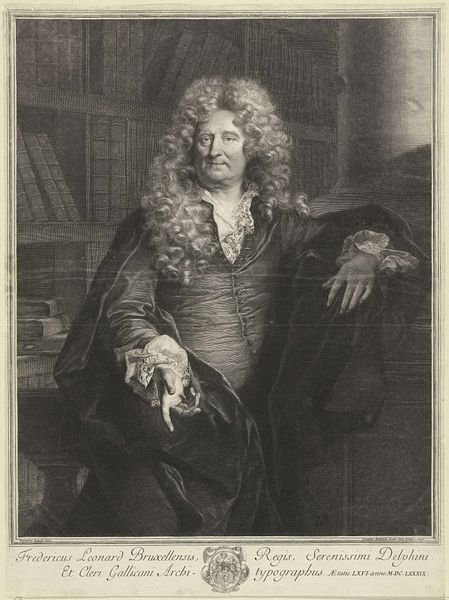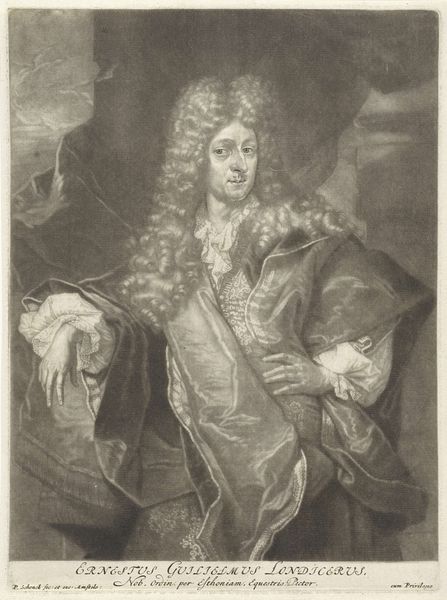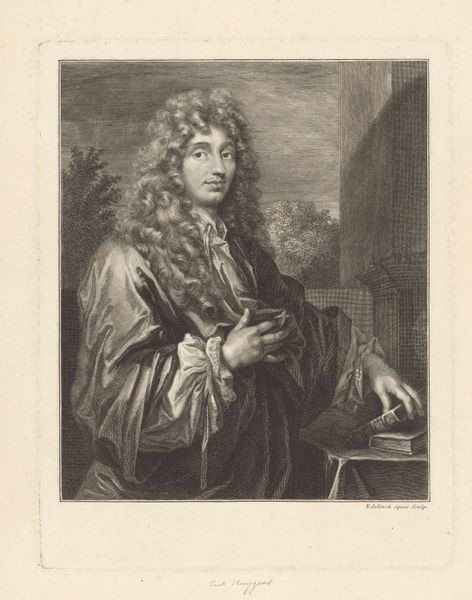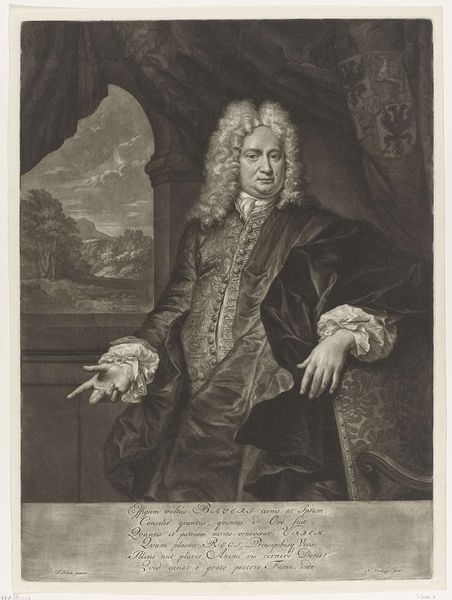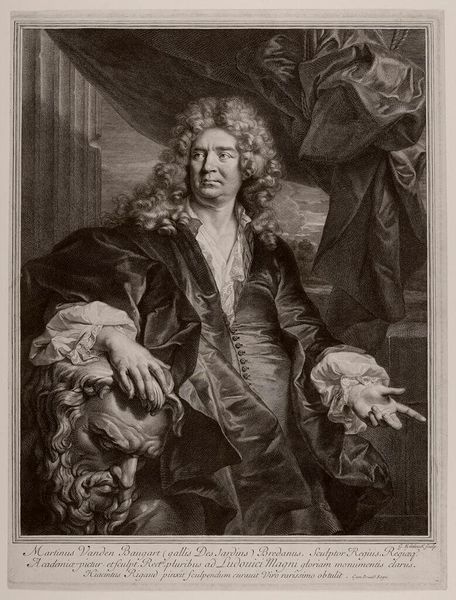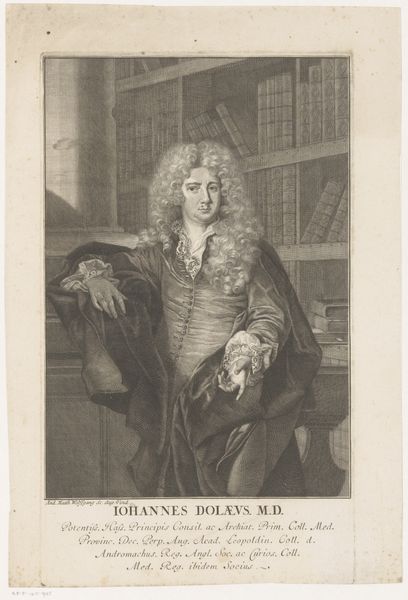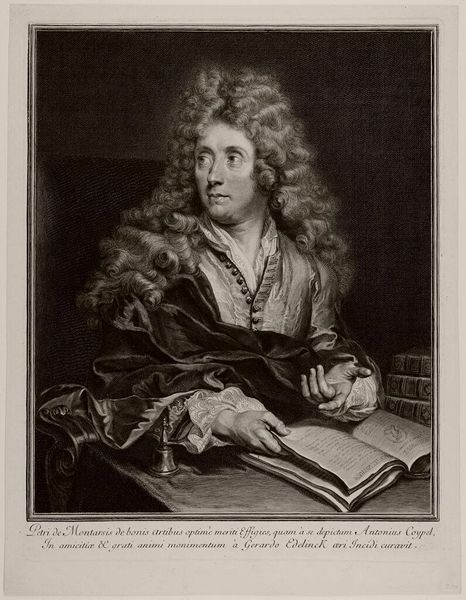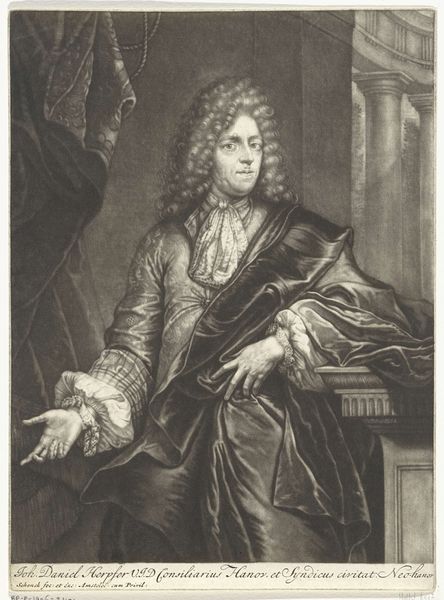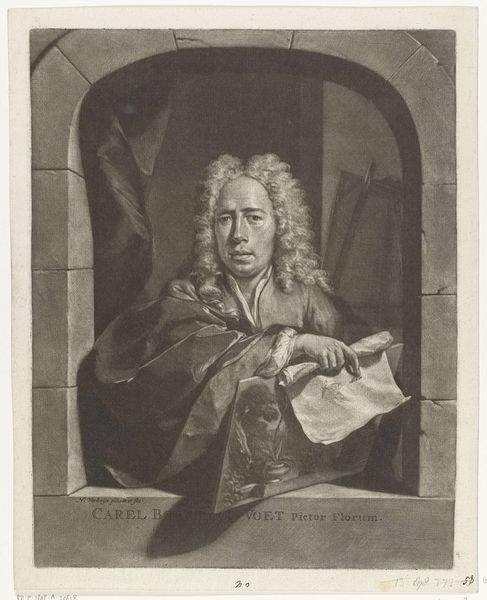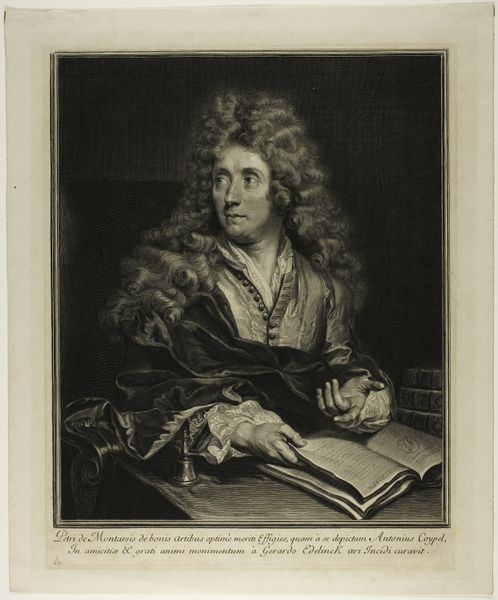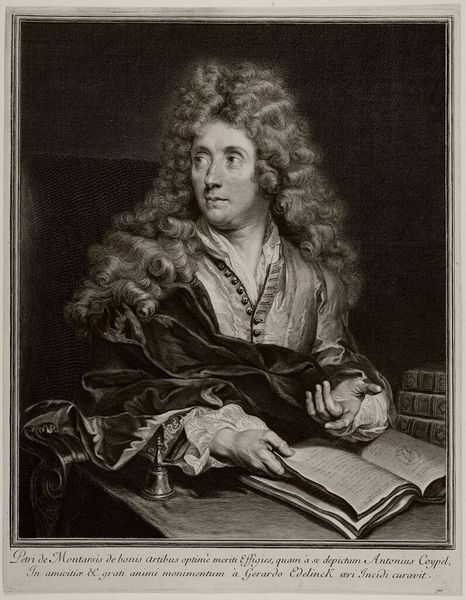
print, engraving
#
portrait
#
baroque
# print
#
engraving
Dimensions: height 247 mm, width 185 mm
Copyright: Rijks Museum: Open Domain
Curator: Here we have Pieter Schenk's "Portret van Johannes Dolaeus," an engraving made sometime between 1670 and 1713, now held in the Rijksmuseum collection. Editor: It strikes me immediately as a very performative image. The wig, the pose, the implied wealth--it's all about projecting status and knowledge. Curator: Absolutely. Let's consider the materiality: engraving. This is a reproducible image, a printed portrait, hinting at a market for these kinds of status symbols. Dolaeus was, as we see inscribed below the image, a medical doctor. Think about the networks required for Schenk to create and disseminate the portrait of Dolaeus in Amsterdam. Editor: The trappings of learning, literally at his back! The shelves overflowing with books suggests that Dolaeus wishes to project wisdom and scholarship. I can also see Vanitas symbols; everything here serves the purpose of immortalizing the subject. It says "remember me," through signifiers of worldly power. Curator: Note the technical skill; the labor put into recreating fabric texture, the sheer volume of that wig, must have required an extraordinary investment of time and skill by the engraver. I am fascinated by the means of image production. We can speculate about who the image served, whether Dolaeus commissioned this print or Schenk did. It’s intriguing to ponder who was selling and buying. Editor: Yes, I'm interested in the fashioning of a persona here, but let's look deeper at how persistent images, or pictorial formulas, come to convey deeper layers of meanings than pure marketing. The clothing signals social position, of course, but also an alignment with powerful archetypes of learning, piety, or governance. These don't just "mean," they allow Dolaeus to access historical notions of power and legacy. Curator: By considering the material, technique and conditions of artistic production, and modes of its distribution and consumption, we can understand not just how he appears, but how a particular construction of social relations solidified. Editor: I've been thinking about how symbols persist, but also subtly change their meanings across cultures and time, shaping how we interpret portraits. This has given me food for thought.
Comments
No comments
Be the first to comment and join the conversation on the ultimate creative platform.
